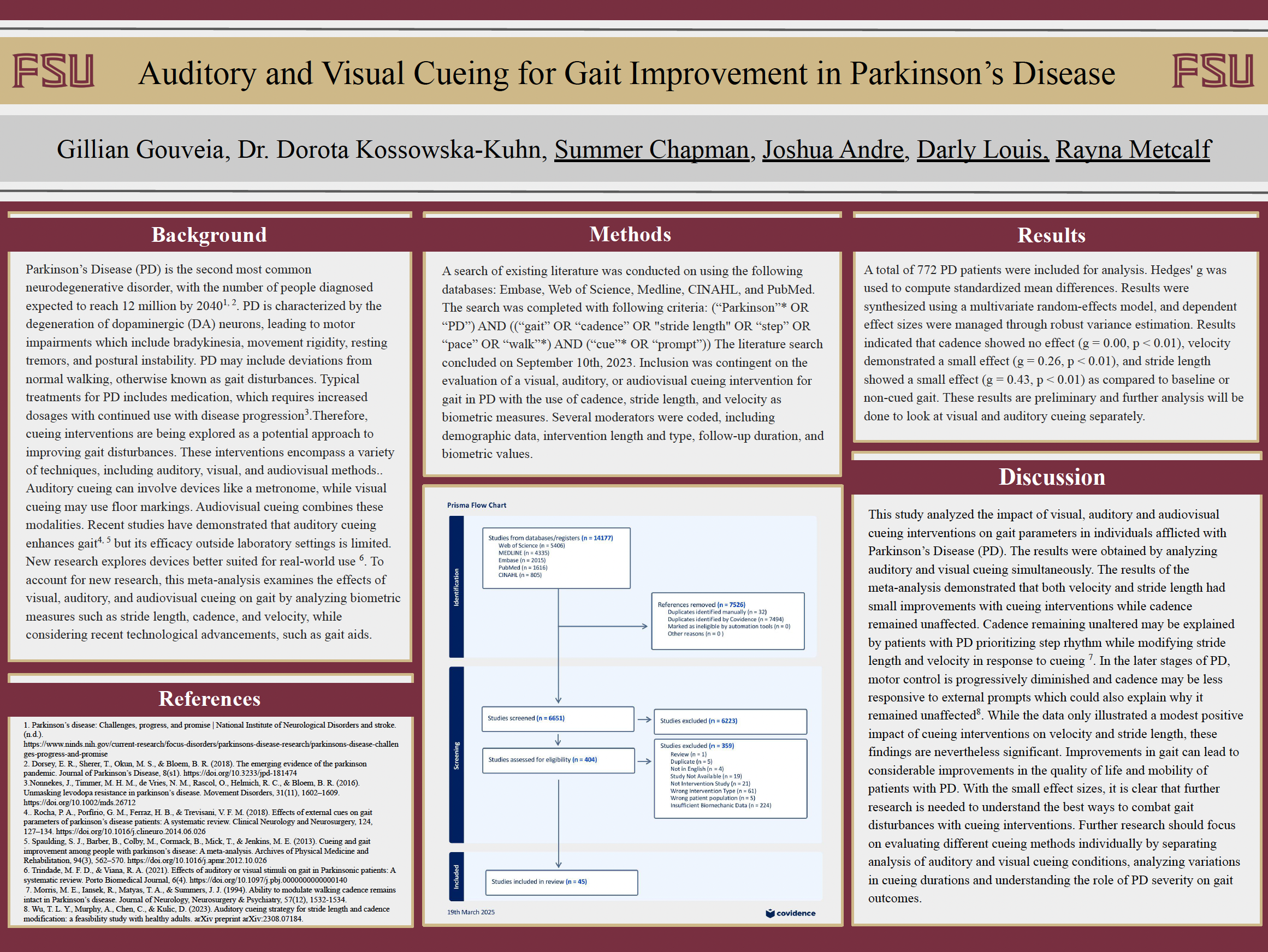Research Symposium
25th annual Undergraduate Research Symposium, April 1, 2025
Joshua Andre Poster Session 1: 9:30 am - 10:30 am / Poster #267
BIO
My name is Joshua Andre and I am a junior pre-med student majoring in exercise physiology with a strong passion for medicine and human performance. I work at Patients First Urgent Care, where I gain hands-on experience in patient care and medical procedures. In addition to my clinical work, I conduct research on Parkinson’s disease, contributing to a better understanding of neurodegenerative disorders. My experiences in both research and patient care have reinforced my desire to pursue medicine and make a meaningful impact in the field.
Auditory and Visual Cueing for Gait Improvement in Parkinson’s Disease
Authors: Joshua Andre, Gillian GouveiaStudent Major: Exercise Physiology
Mentor: Gillian Gouveia
Mentor's Department: Psychology Mentor's College: FSU College of Arts and Sciences Co-Presenters: Summer Chapman, Darly Louis, Rayna Metcalf
Abstract
Parkinson’s Disease (PD) is a neurodegenerative disorder marked by the degeneration of dopaminergic (DA) neurons in the substantia nigra pars compacta (SNc), a key region housing the majority of dopamine-producing neurons. This degeneration results in dopamine depletion and subsequent motor impairments. Thus, PD commonly presents with motor symptoms such as bradykinesia, rigidity, and resting tremors that affect movements such as walking, otherwise known as gait. Prior research suggests that visual and auditory cueing can improve gait disturbances. This meta-analysis examines how different cueing methods impact gait by analyzing biometric values such as stride length, cadence, and velocity. A search of existing literature was conducted using Embase, Web of Science, Medline, CINAHI, and PubMed. Studies included visual, auditory, or audiovisual cueing interventions for PD patients. Several moderators were coded, including demographic data, intervention length, follow-up duration, and biometric changes. A total of 772 PD patients were included for analysis. Results indicated that cadence showed no effect (g = 0.00, p < 0.01), velocity demonstrated a small effect (g = 0.26, p < 0.01), and stride length showed a small effect (g = 0.43, p < 0.01) as compared to baseline or non-cued gait. For the purpose of analysis, auditory and visual cueing were combined. Data synthesis was conducted using a multivariate random-effects model, and dependent effect sizes were addressed through robust variance estimation. Further moderator analysis is needed to explore the relationship between intervention types and biometric value changes.
Keywords: Parkinsons, Gait, PD


